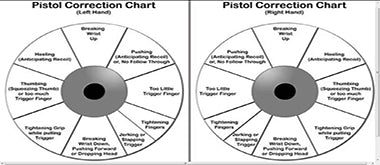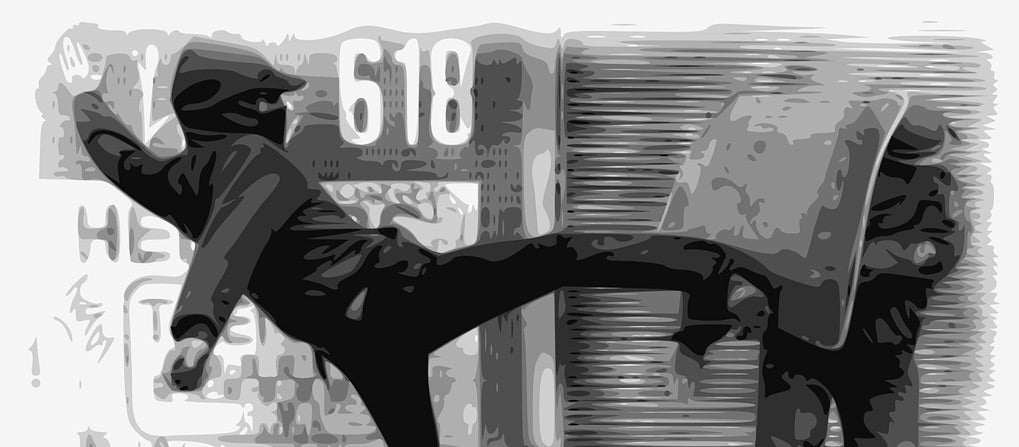
Pistol Correction Chart

Pistol Correction Charts (Also Known and Common Error Charts) are the probably the most misused tool in the training industry. They are popular because they superficially promise a quick “one-size-fits-all” cure for common pistol shooting errors.
A pistol correction chart is a circle (shaped like a bull’s-eye dissected in to 6 – 10 segments with the typical errors associated with impacts listed in their respective zone. They can be a useful tool in only the most generalized sense. Every shooter is unique, with body mechanics, habits, and trends that combine in a way that is meaningful only to that shooter. If you didn’t make the pistol correction chart, that chart is not universally applicable to you. It might be that error, or any other number of combinations of errors that is causing you to miss the center of the target. There are certainly trends that can be identified, but they are designed to help diagnose trends, not individual shots and are far from universally applicable. The best solution to a consistent error is a quality coach!
Common errors listed on charts are some mix (with some additions or subtractions) of the following.
Thumbing – Too much thumb pressure that drives the barrel toward the side of the strong hand.
Healing – driving the heel of your hand in to the pistol grip.
Trigger finger placement – usually too much or too little on the trigger which pushes the barrel inward or outward.
Anticipation – Pushing on the gun prior to recoil in order to halt the effect of recoil OR “riding” the recoil by unconsciously “assisting” the elevation of the muzzle in anticipation of recoil “since the gun was going ‘up’ anyway.”
Jerking – Jerking the trigger vice a steady increase in trigger pressure which causes unnecessary movement in the barrel during the shooting process.
Grip pressure – usually strong & support side & again too much & too little.
Pistol Correction Charts are typically constructed by bull’s-eye pistol shooters by intentionally applying the faults for a series of rounds in varying degrees. Over the course of shooting 25 or 50 rounds, they would establish a group that would indicate where the round impacted when the were making this error. In the future, when shooting they could refer to this reference to adjust for their “common errors.” More likely, it reminded them to consider the impact this error has on their shooting & use it as a starting point to refine their techniques. It is also worth noting that bull’s-eye shooters fire their pistols One Handed, and thus the errors are exacerbated.
Some of these charts are now published in coaching publications as a means of correcting new shooters. This is a colossal waste of time for two reasons. A coach should not be looking at the impact of your bullets to tell you what you are doing wrong. He or she should be looking at you! If they lack the experience to diagnose your shooting errors by watching you shoot, what are you paying them for? You could just as easily send a photo of your target to a professional and have him or her email you some feedback – and no professional is likely to hazard that guess with out personal experience with that shooter.
Secondly, the pattern of bullet impacts can only provide evidence that there is an error in shooting technique. Without actually observing the technique in practice, it is impossible to accurately assess the fault and provide effective corrective actions. It would be like looking at an image of golf ball impacts and trying to diagnose a swing issue. This is especially true with new shooters. Typically, there is more than one error contributing to the problems. To top it off, everyone has bad shots from time to time, which are outside their personal norms.
In the intermediate pistol course, we create a pistol correction chart for each of our shooters. This exercise provides each student at tool to use to analyze their shooting technique while providing long-term self-analysis to increase accuracy. You can find a number of examples of pistol correction charts here.
Here is the real tip – don’t use a pistol correction chart unless you made it!
~ Patrick Henry
Leave a comment
Comments will be approved before showing up.
Also in Staff Articles

Home Defense - What you can do...

Gun Review: Sig Sauer P938


Patrick Henry
Author